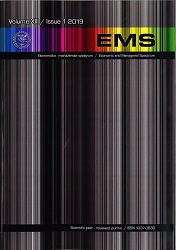ARIMA MODEL FOR PREDICTING THE DEVELOPMENT OF THE PRICE OF GOLD: EUROPEAN APPROACH
ARIMA MODEL FOR PREDICTING THE DEVELOPMENT OF THE PRICE OF GOLD: EUROPEAN APPROACH
Author(s): Ligita Gasparėnienė, Rita RemeikienėSubject(s): Methodology and research technology, Policy, planning, forecast and speculation
Published by: Žilinska univerzita v Žiline, Fakulta prevádzky a ekonomiky dopravy a spojov, Katedra ekonomiky
Keywords: prediction; gold; ARIMA modelling; time series;
Summary/Abstract: Time series analysis has a long tradition in economics. The foundations of the current time series analysis, focusing on modelling of the development of one time series, were laid in the interwar period. In recent years, many new methods and approaches have emerged in the field of economic time series analysis. Also, the conditions for their practical application in our country have significantly improved in recent years, which is due to the relatively easy availability of a relatively wide range of types of quality software and the growing length of the analysed time series. In this research paper, we focused on the analysis of time series using the ARIMA model to predict the price of gold by the end of 2020. Those who did not believe that the gold price could strengthen significantly shortly before the outbreak of COVID-19 they are not enough to wonder. Its value returned to green numbers after the fall in the price of the commodity, which caused growing concerns after the outbreak of the world virus pandemic. It was the reason for the analysis of this particular commodity. The introduction contains the necessary information on the problem and basic knowledge of the theory of time series and their modelling, characterizes the Box - Jenkins methodology, and finally, the statistical software used. The method describes the procedure of data processing and the creation of the ARIMA model. The results section presents results and predictions in the last part of the discussion and conclusion; the results and interpretations of the results are summarized.
Journal: Ekonomicko-manazerske spektrum
- Issue Year: 14/2020
- Issue No: 1
- Page Range: 87-96
- Page Count: 10
- Language: English

